Alexandra Virina Scott MBE is an English television presenter, pundit, and former professional footballer. She played for Arsenal W.F.C. in the FA WSL mostly in the right-back position. Alex also made 140 appearances for the England women’s national football team and represented Great Britain at the 2012 Summer Olympics. She is now a familiar face on television.
Alex was brought up in a single parent family in London after her father left when she was about 7 or 8 years old. She admits to the camera in the Who Do You Think You Are? episode to be shown on BBC One on Tuesday 26 October 2021, that she comes from a family that just didn’t ask many questions about where they came from. She is aware that her mum had to cope with being a single white woman bringing up two black children, though she encouraged them to keep in contact with their father’s mum.
Alex’s nan is from Jamaica and she was one of the most important people in her life. When Alex received her MBE she took her with her to Buckingham Palace and threw a tea at the Ritz for the women in her life.
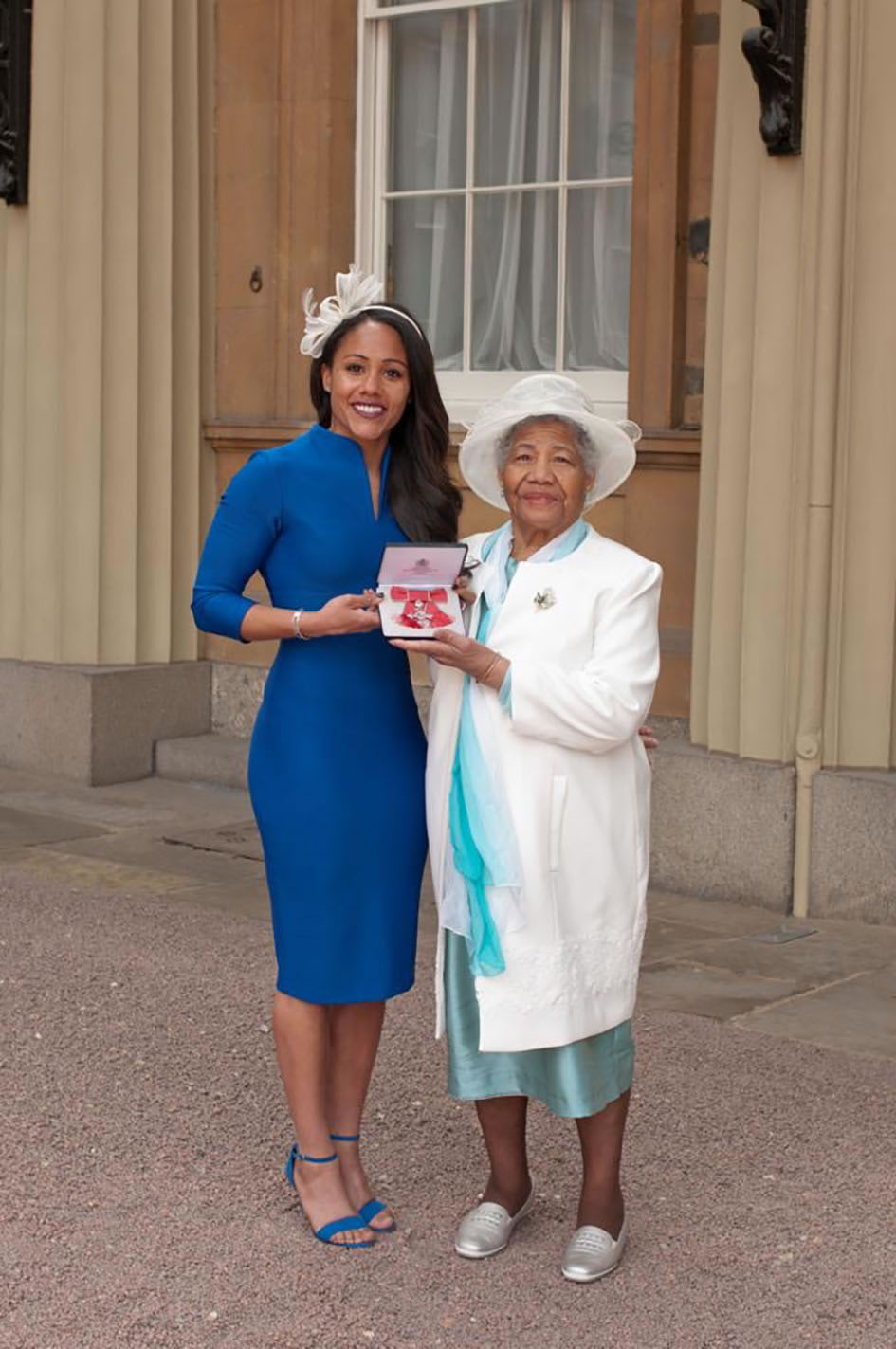
On her mum’s side she thinks there is possibly an Irish connection, but to find out more she goes to meet her mum, Carol McKee, for tea.
Alex’s mum shows her a picture of her own mum, Nanny Lil (whose actual name had been Leah). Also in the photo is her dad, Alex’s grandfather and Carol’s brother Mickey. Alex finds out that her mum’s dad left when she was 10 or 11 and that he was originally from Belfast in Northern Ireland. Nanny Lil’s family had been Russian Jews and Alex’s great grandfather had been called ‘Phil G’.
Philip Gittleson, to give him his real name, had been a bookies runner taking illegal bets and was always keeping ahead of the police. Carol’s grandmother, Emily, had died the year after Carol was born and so she has no memories of her. She does, however, remember her granddad, Phill G, as he had come to live with her mum’s family when he was an elderly man. She recalls how on a Saturday night he would get dressed up and shine his shoes to go out dancing with his young lady. Carol recounts how smart he would be and muses that Alex gets her dancing and sportiness from him as when he was younger he could run fast to outwit the police.
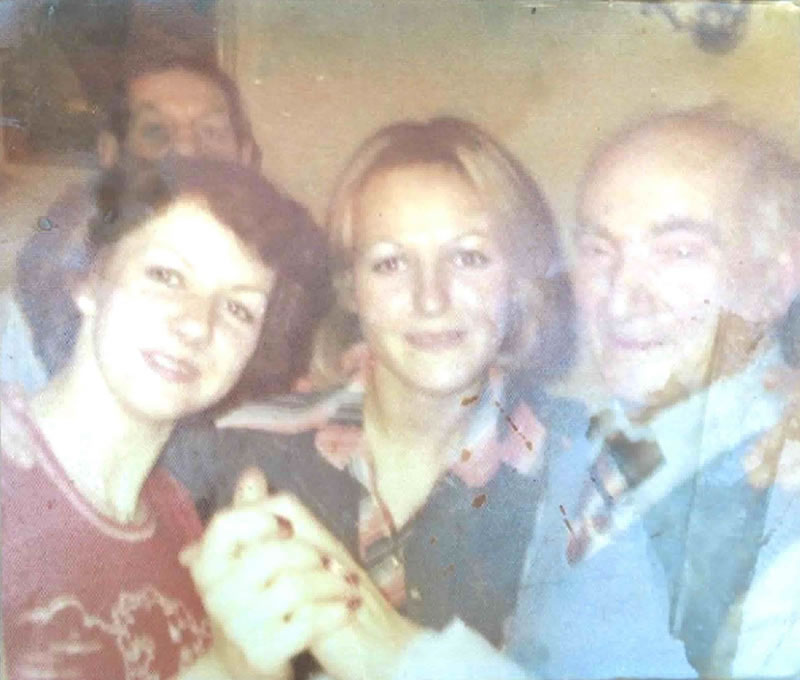
Carol also tells Alex how in 1936 Phill G had been attacked in the Battle of Cable Street. This was when Sir Oswald Mosley’s Black Shirts were planning to march against the numbers of immigrants in the East End. The route took them into the area where many Jews lived and with the police force trying to clear the route for the demonstration clashes took place between the anti-fascists and the police. Phill G’s parents, Morris and Dara Gittleson were from Russia and the family had lived in this area where the march was due to take place.
Alex pays a visit to one of the oldest synagogues in London at Sandy’s Row. This synagogue was founded in 1854 and she is hoping that historian Alan Dein, whom she meets there, will be able to tell her something about her family. Alan can tell her that Morris and Dora married in Zagare, Lithuania which was part of the Russian Empire at the time. Anti-sematic policies had forced Jews to live in certain areas in that country and it was difficult to earn a living there. Pogroms, attacks on the jews were taking place and almost 2 million Jews fled Russia between 1881-1914.
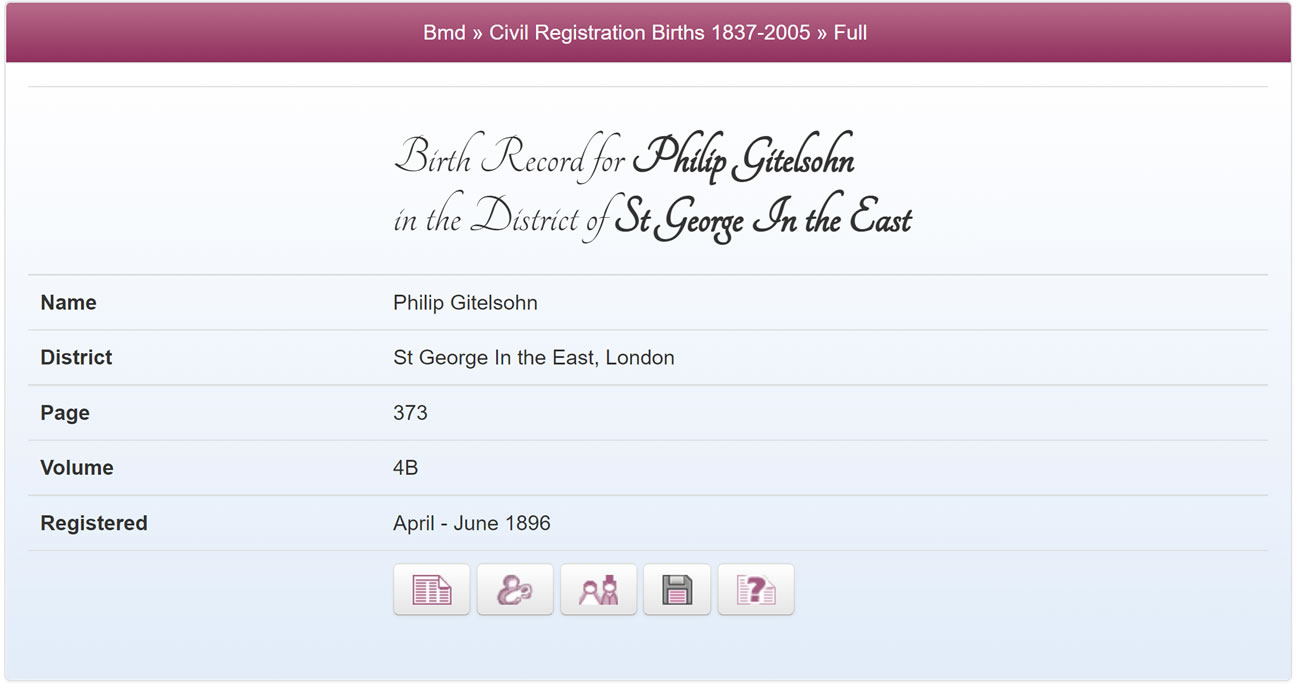
Alex is shown a document from the 8th April 1896. It is a birth certificate of Alex’s great-grandfather, Philip. The address is 17 St George Street which is now part of the road known as The Highway. Often when an old road has changed its name, turning to the Map Explorer will help to identify where it had once been.
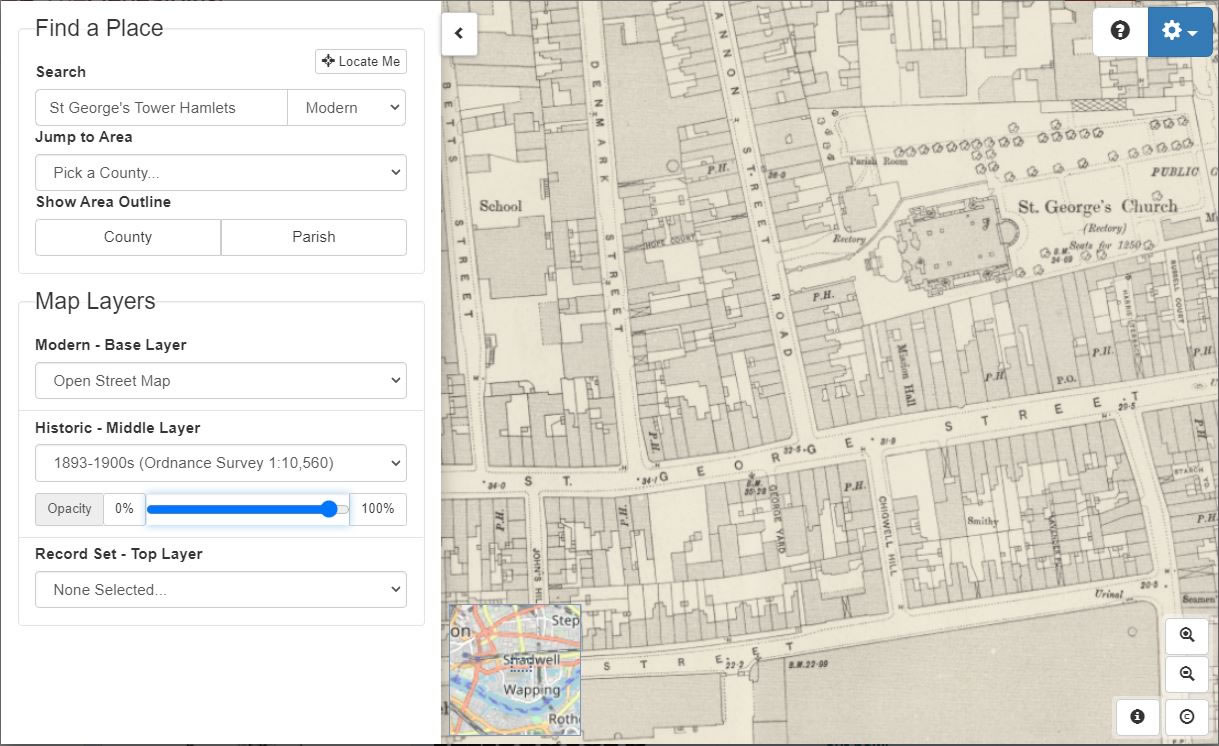
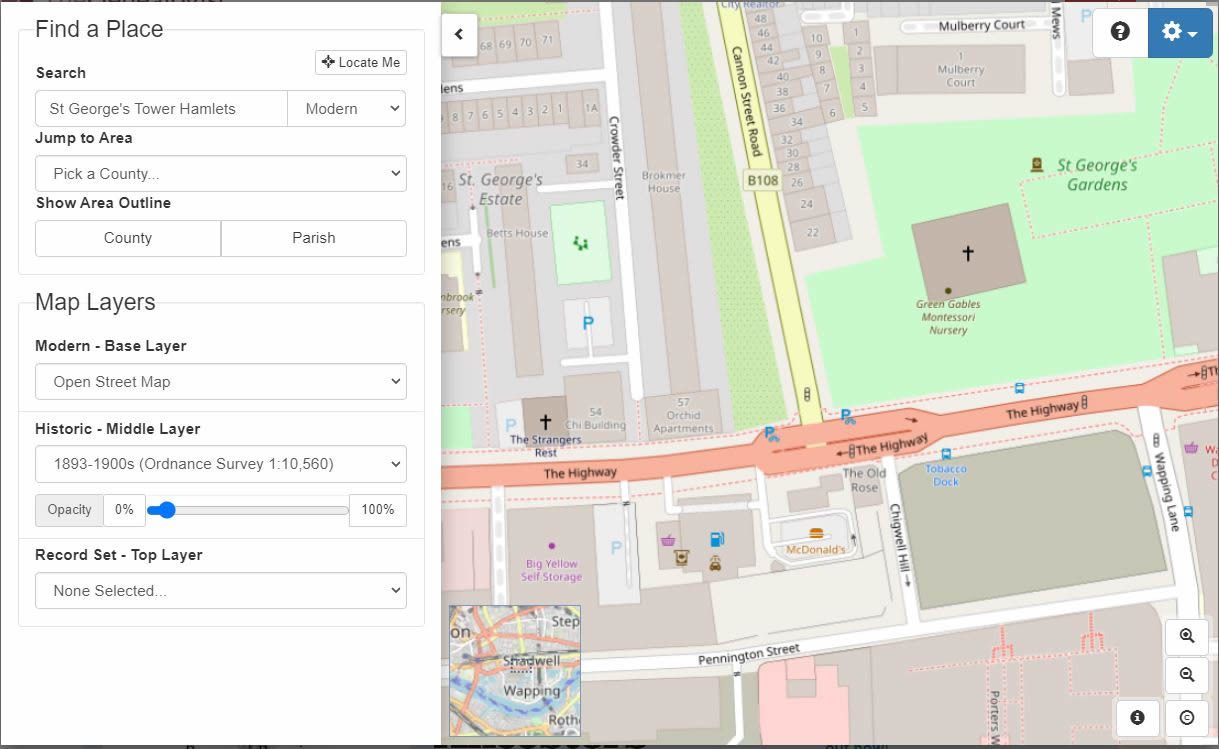
Alan explains that most Jews lived around Spitalfields and Whitechapel in London and showing Alex a map of where the Jewish settlements were, he points out that the Gittlesons lived on the edge of the Jewish community.

The next document that she is shown is the 1911 census. The historian draws Alex’s attention to the number of members of the family that are listed. This is nine and when she is shown the number of rooms that they had to share she sees that it is only two! All the family had to cram into just the two rooms, and this gives a sense of the state of the living conditions that this generation of immigrants had to put up with in that period.
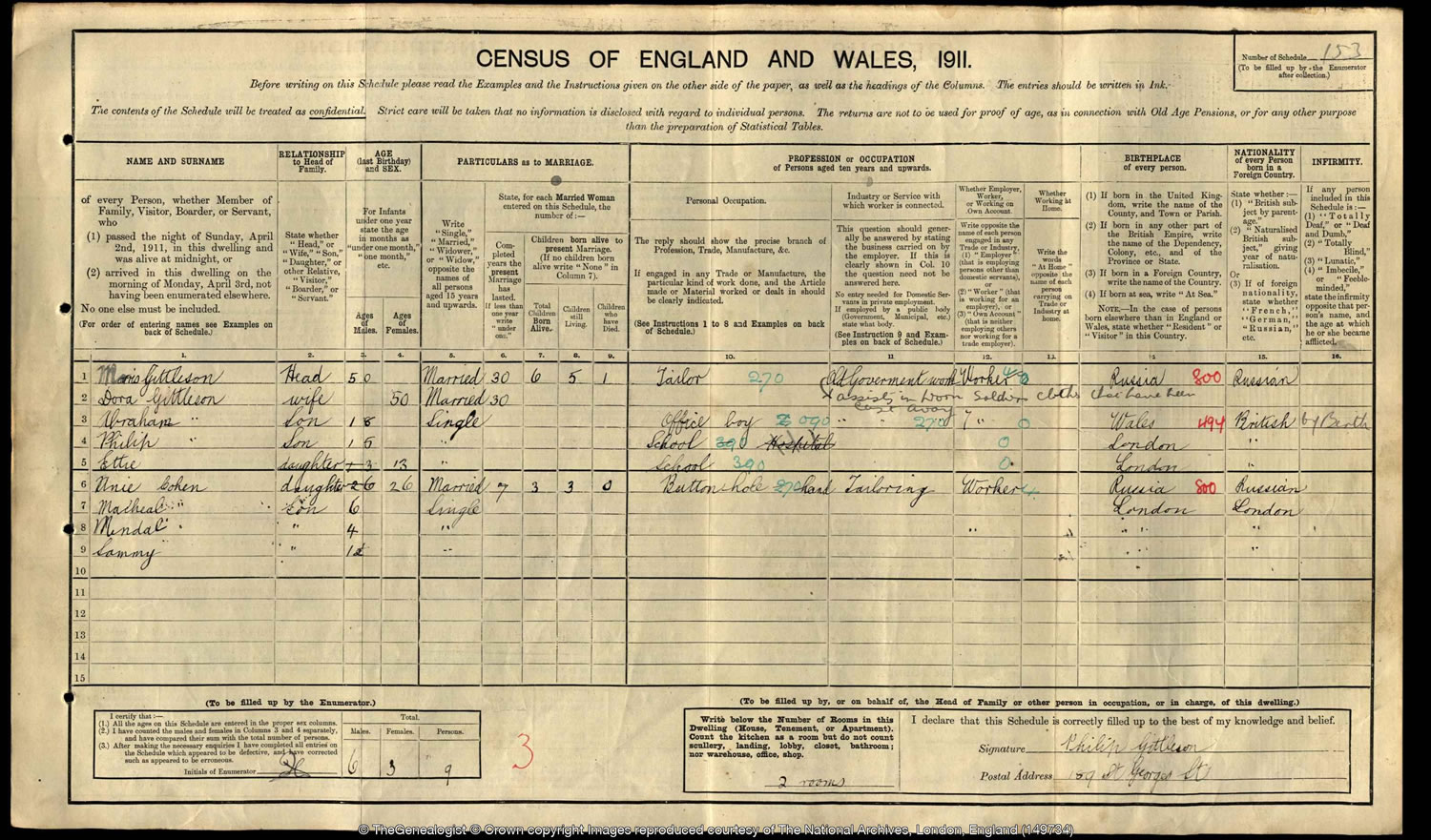
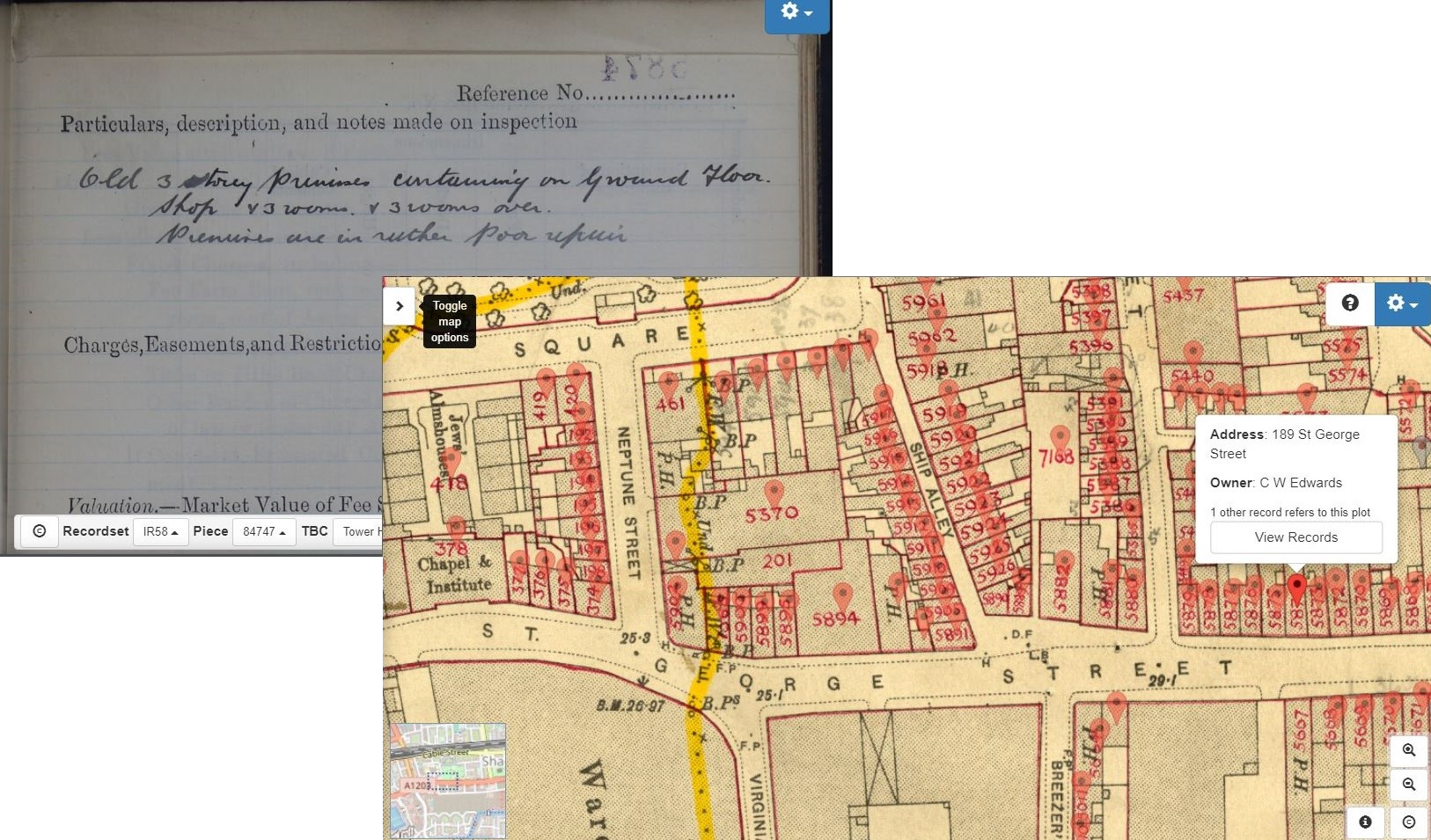
Phill G had an elder brother called Abraham Gittleson, who would be Alex’s 2x great-uncle. By searching the 1939 Register Abraham can be found in this recordset as a patient at Colney Hatch Asylum, Friern Barnet, though the term used then was ‘inmate’.
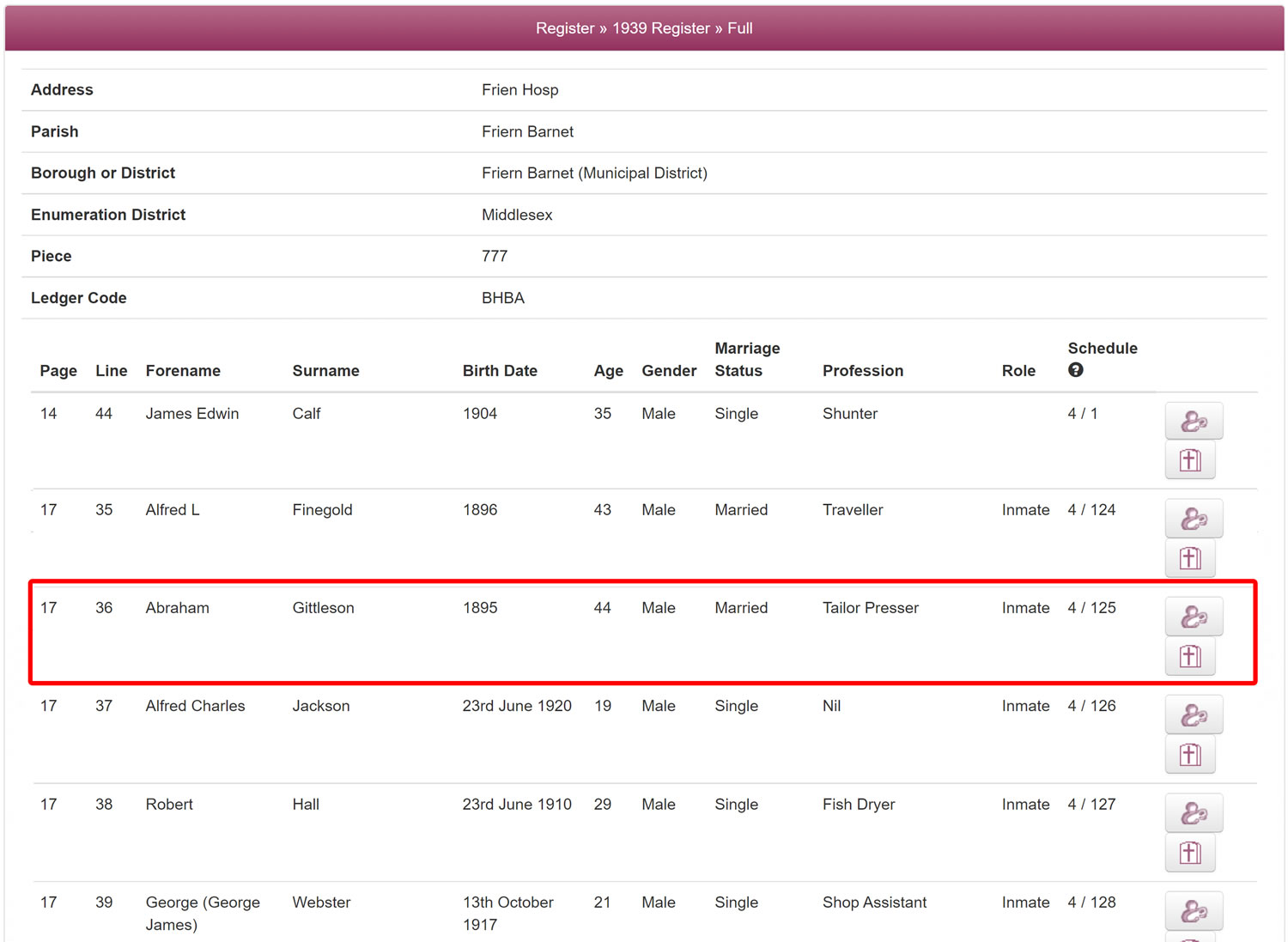
Alex goes to the site of the former asylum and meets the historian Dr Vicky Long who is able to show her that her great great uncle Abraham had been admitted in 1934 according to his patient case notes. It is noted that unemployment suffering from depression, hearing voices and believing that his wife was unfaithful were the reasons for his admission. It was a time of the inter-war Great Depression and that was why he would be out of work.
This period saw the rise of Sir Oswald Mosley when in 1932 he set up the British Union of Fascists inspired by Adolf Hitler. Mosley exploited widespread discontent and poverty among the population and turned it onto the immigrants such as the Jewish refugees. While his family were from Russia Abraham was actually born in 1893 in Cardiff.
Access Over a Billion Records
Try a four-month Diamond subscription and we’ll apply a lifetime discount making it just £44.95 (standard price £64.95). You’ll gain access to all of our exclusive record collections and unique search tools (Along with Censuses, BMDs, Wills and more), providing you with the best resources online to discover your family history story.
We’ll also give you a free 12-month subscription to Discover Your Ancestors online magazine (worth £24.99), so you can read more great Family History research articles like this!
His wife petitioned the hospital for the discharge of her husband on 5 separate occasions, but her appeals were rejected. Dr Long tells Alex that there was little evidence of any effective treatment being given to the patients at this time. It was more a case of just looking after them until they died or recovered. Unfortunately for Abraham it was the former. Alex is shown a Death certificate from 30 Jan 1963 when Abraham, aged 69 and a retired Tailor passes away in the mental hospital. Alex is saddened by finding out about Abraham. It resonates with her on account of her own mental health issues and depression.
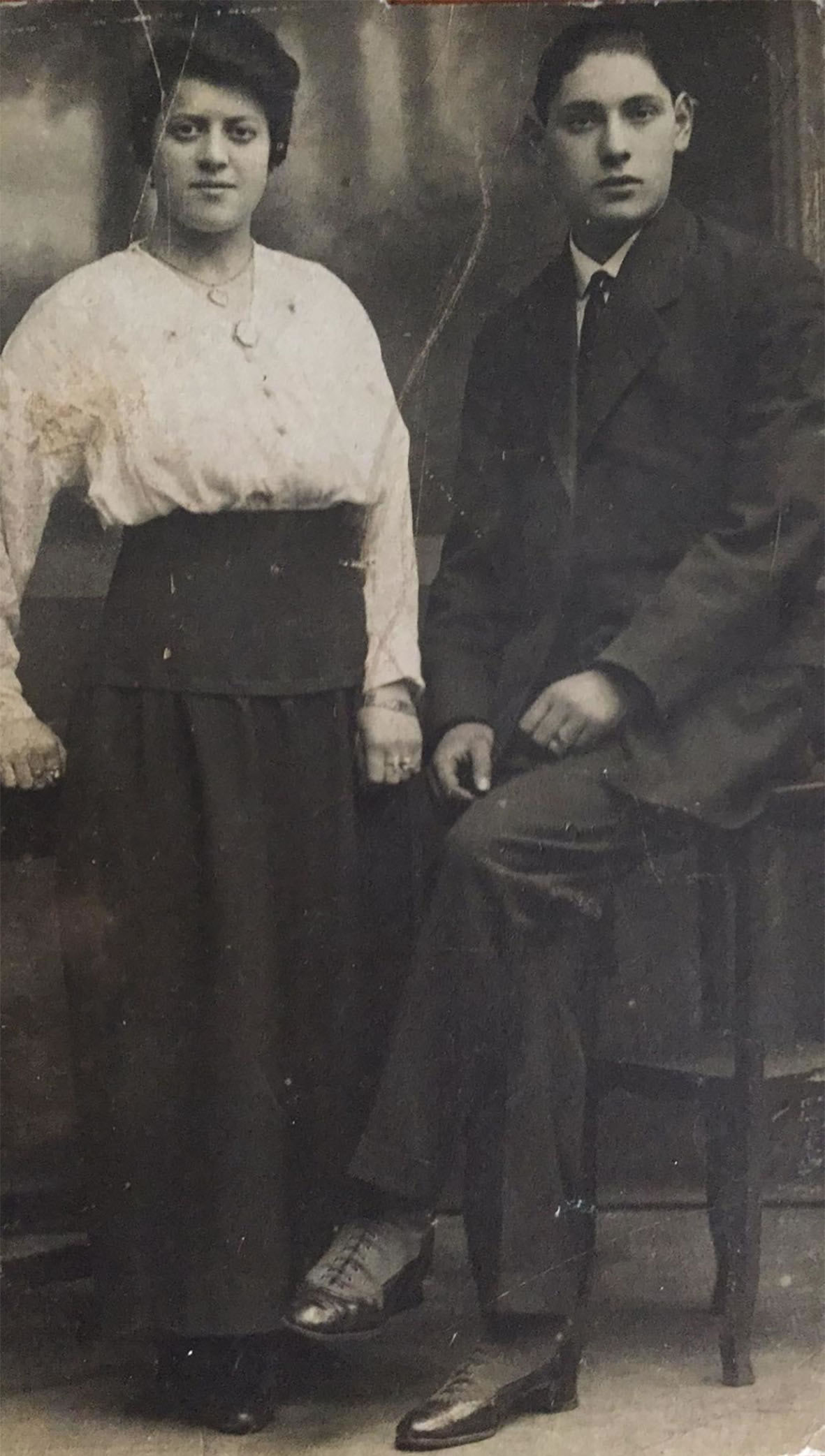
Meanwhile Abraham’s younger brother, Phill G, was living in the heart of the East End in the 1930s. Alex next goes to meet Tony Kushner, a historian of the modern Jewish experience. She is shown an entry in the Poll Books from 1936. The family are still in the same street, St George Street, in a time when all around them were people hostile to the Jews. With the memories of the pogroms in Eastern Europe, this must have been a frightening time but at least there was some communal solidarity amongst the Jews of the East End.
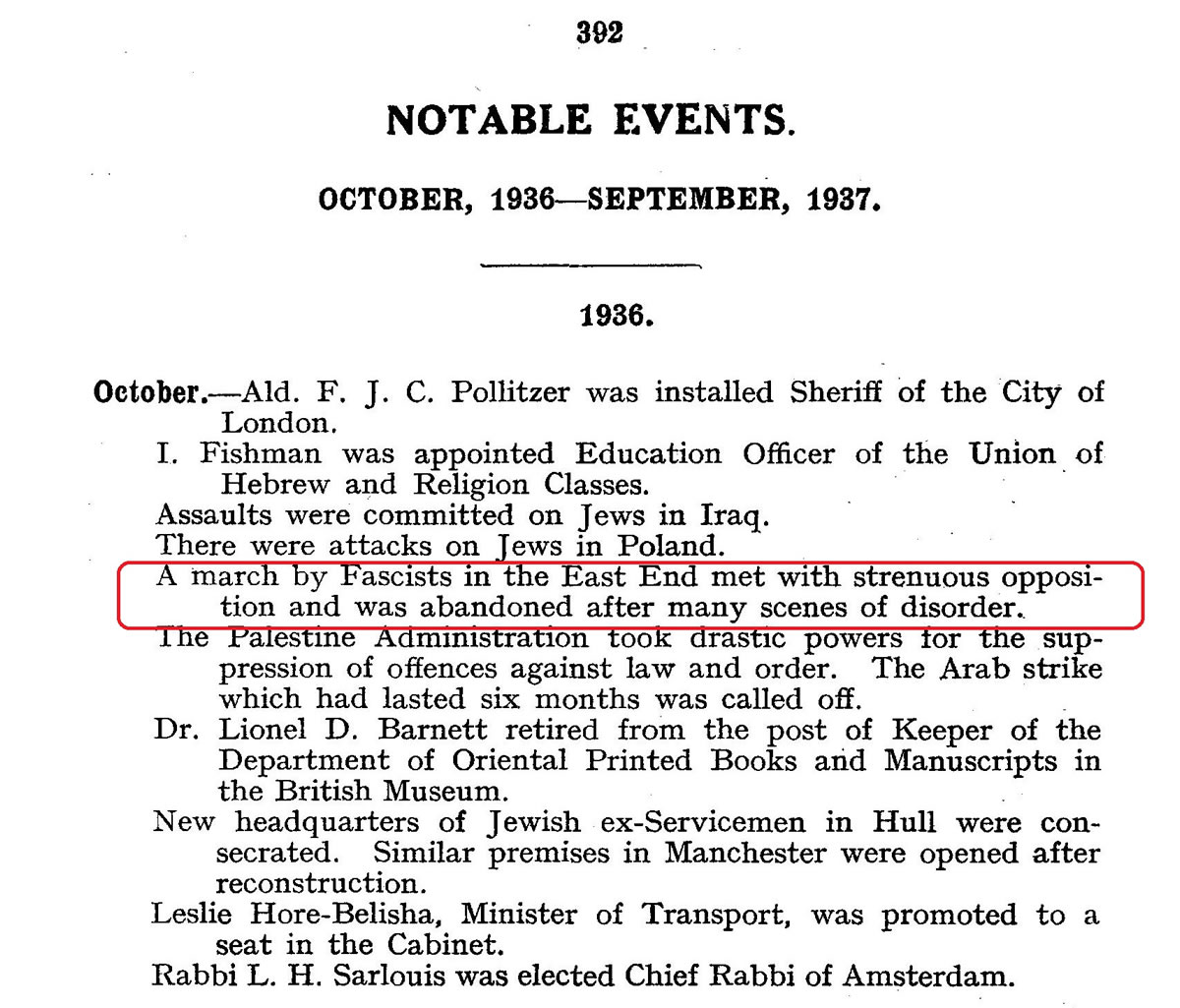
On the 4th October 1936 Sir Oswald Mosley and his Black Shirts threatened to march through the Jewish areas of the East End. Alex is shown an entry in the Jewish Chronicle for October 1936. Tony Kushner, the historian, explains that the Battle of Cable street was actually between the residents and the Police who were trying to make a way through for the march to take place.
Alex is proud of being a Londoner from the East End saying that Britain is a nation of immigrants.
Jamaica
Alex now wants to find out about her Jamaican nan. To start with she goes to see her cousin Marie. They recall how their grandmother had been called Mrs M which Marie thinks was short for Mrs Mum because their grandmother had looked after so many children.
Marie shows Alex a marriage certificate for John Scott, Port Antonio, Parish of Portland in Jamaica and dated the 27th January 1900. The groom’s father was listed as Edward Scott and the bride’s father was recorded as being Cleveland Guest.
A Jamaican Birth certificate for Edward shows that his father was Edward Scott, a sailor from the Caribbean island. The television programme follows Alex as she visits Jamaica for the first time and travels to Port Antonio on the north east of the island. Here she meets historian Dalea Bean. Alex is shown a manifest of a passenger ship to the United States for a passage that is dated 4th July 1905. Her ancestor, aged 22, is a servant of J H Baker. Dalea is able to explain that this is Joshua Hamlyn Baker, an American and the son of Lorenzo Baker who had been very important in making the banana a cash crop. The passenger list shows the ship, SS Admiral Dewey, arriving at the Port of Boston, Mass.
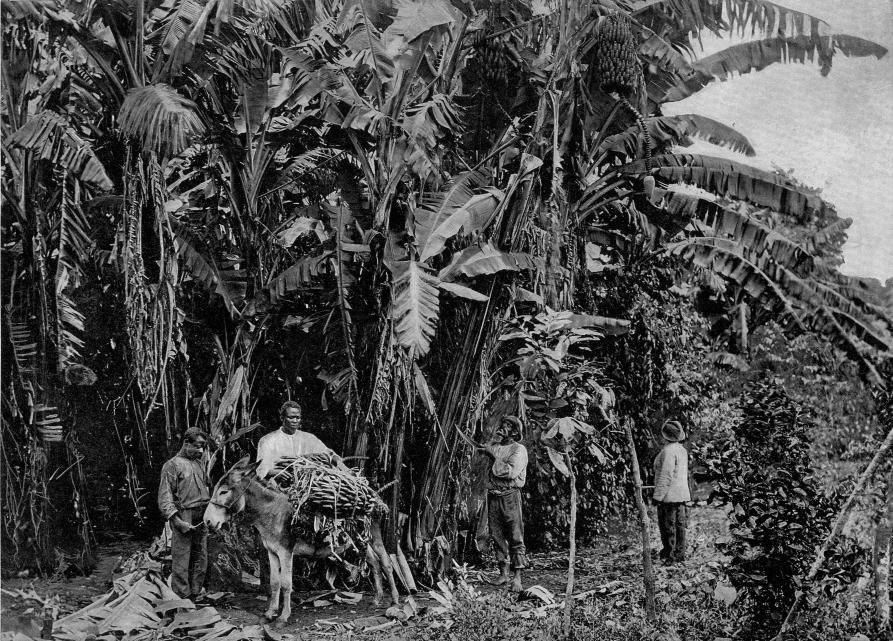
Alex is told that being the servant of a powerful man is a positive and not a negative thing. She is shown a photo of Banana wharf with well-dressed Black men, which is probably very much how Alex’s great grandfather would have looked in his employment with the Bakers. Dalea then shows Alex a list of the times that her great grandfather turns up in records. This details that he had a lot of occupations over this time. From 1905 he was recorded as a Servant, then on 26th May 1909, his marriage certificate had him down as an Engineer. But on 9th June 1909 he was listed as the servant to Joshua H Baker, who was also on board the ship. At the time of the birth of daughter, 28th Oct 1909, Edward Scott was a sailor, the 10th June 1910 a machinist, his passage having been paid for by employer Joshua Baker. On the 17th June 1911 he was a Steward working for Joshua H Baker and his employer had paid for his ticket. The 27th August 1911 on his son John’s birth certificate (this is Alex’s grandad) Edward is a Sailor, then on the 4th June 1912 a passenger list identifies him as a Servant. Another in 1912 had him down as a machinist while one in 1913 records him as a Marine Engineer and Servant paid for by his employer who is still Joshua H Baker.
Alex is impressed with her ambitious Jack-of-all-trades ancestor. She thinks that he must have wanted to travel and better himself. Dalea then tells Alex that Edward appears to go to the USA for a while, but then he returns to Jamaica with his wife. After 1915 it would seem that the ties were broken with the Bakers and the next record that Alex is shown is Edward’s death record at the age of 68 years in Portland, Jamaica. This is in the heart of the area where he grew up.
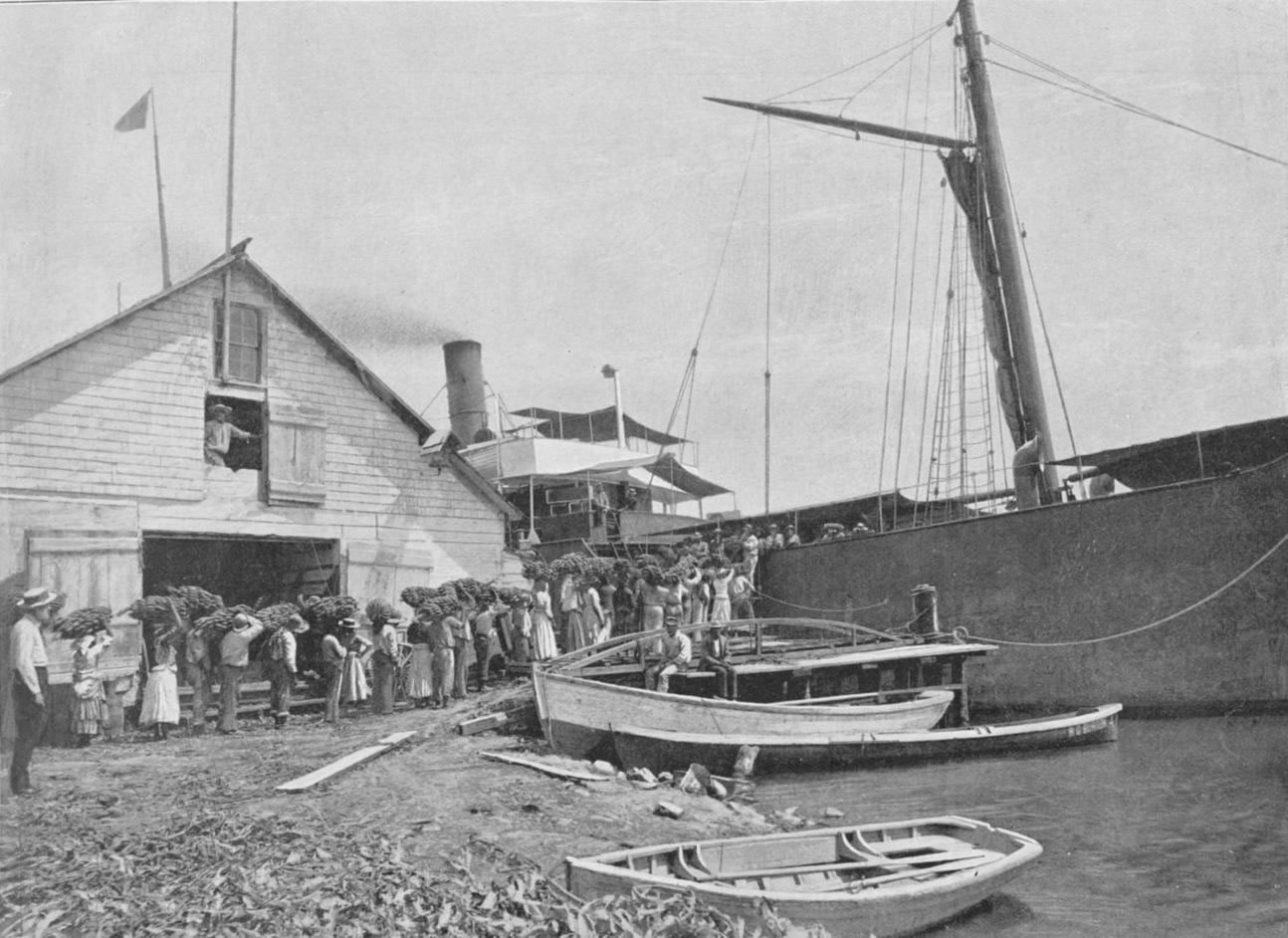
Cousin Marie had given Alex the birth certificate of her nan, Phillizetta or Philicita. Dated from 1929 it recorded her grandmother’s birth at Swift River, Portland. The document reveals to Alex who her great grandparents had been. Their names were Isadora Wright and Cleveland Guest. To take the family research further on, Alex goes to meet a distant cousin, Lynette Reynolds. Lynette tells her that the family left Swift River at an early age and went to Port Antonio. There had been a terrible flood at Swift River that meant that many people had to be moved to a new life in Port Antonio, Alex’s great grandparents included.
Access Over a Billion Records
Subscribe to our newsletter, filled with more captivating articles, expert tips, and special offers.
Lynette tells Alex that Cleveland was actually her mum’s uncle. He came to live with them when Lynette was about 6 or 7 and was one of the most quiet and peaceful souls she could wish to meet. A hard worker who toiled on the farm, he would often talk about his mother, Henrietta Coombs.
Alex then gets given her great great grandmother Henrietta’s baptism records. These reveal that she had been born July 25th 1875. The father is named Samuel Coombs, a labourer and the mother is Mary Bailey. Alex learns the local pronunciation of Henrietta is different from the way she would say it, sounding more like Hern-ietta. Alex also reads an unfamiliar term that says that Henrietta is born a Sambo, which she doesn’t pursue at the time but will come back to later in the investigation into her family.
The document provides the information that they lived at Happy Retreat, so this is where Alex goes next. There she is able to meet historian Shani Roper on the estate where her family once lived. Henrietta, it is understood from the records, has had two spouses and one partner. Cleveland is her fifth child out of a total of seventeen! More information is provided by records that show that in March 1905 Henrietta’s husband, Phillip Green, died of dropsy (oedema) aged just 25. As a labourer his poor diet would have contributed to his death. Henrietta is left with nine children. Another record for 1905 shows that Mary, her mother, also died of dropsy and then in 1912 two of her children died of the same disease.
Henrietta survived until 1942 when she died of cancer aged 67.
Alex then asks Shani about the term Sambo that she had seen on the birth certificate. She is told that it is a gradation of blackness for a person and is a derogatory term. Having noted that Samuel Coombs is Henrietta’s father this makes him Alex’s great great great grandfather. Pleased to have got back another generation, she then goes to meet historian Suzanne Francis-Brown in the area where the Coombs had lived.
The next record that Alex is shown is the baptisms from 1832 in the parish of St Ann. Samuel is described as being of colour, as opposed to being white or black. After centuries of enslavement by white Europeans there was a substantial mixed race population on the island. Skin colour determined wealth and social position in Jamaica and so Samuel would have experienced some discrimination, but may have benefited from a few privileges such as an education or the right to own property because of his skin. Samuel was the child of Alex’s 4x great grandparents, Robert Francis Coombs and Frances Tracey. Robert was a freeman, who was probably of colour, but Frances seems to be black.
Slavery was abolished in 1834 when Samuel was a child but his parents had lived at a time of slavery, though there is no record of them having been enslaved in the slave returns. Shani, the historian, refers to a document dated the 28th day of June 1826, however. In this record Robert Francis Coombs is revealed to be the owner of a number of persons, a revelation that really shocks Alex. By the early 1830s the Abolition of Slavery was going to become law and so the British Government of the time was setting about arranging to compensate the slave owners for their loss Alex learns that Robert claims compensation for 26 slaves including some who were children born into slavery.
A will dated 12 November 1851 for Robert Francis Coombs has been found and Alex gets to read a transcript. Robert had died almost 20 years after slavery was abolished. In his will he bequeaths an annuity to Frances Tracey, described as his present housekeeper, who is Alex’s 4x great grandmother. Frances also gets life-enjoyment of his house and some other property. But there is also another provision for one of his former slaves who had appeared on the slave return. This woman, Eleanor, and the children they had produced together are given annuities proving that he had been a complex individual who had kept slaves, had children by them, but on the other hand he would not have been expected to have made these provisions for them.
Alex is able to go to see her 3x great grandfather’s grave when local resident Donald Robinson cuts a way through the vegetation for her. He reveals that he is also related to the Coombs, as are many people in that area. He congratulates Alex on tracing her family and leaves her with a quote that she really likes:
If you don’t know where you’re coming from then you will never know where you are going.
When she set out on this research Alex had been prepared to find that her family history would include slavery; but she had never expected to find out that her own family had been slave owners themselves. This fact was hard for her to take and she is distressed that her ancestor, as a black person, had seen it acceptable to have owned human beings. It is a difficult and emotional end for her family history search.
We have been able to use records on TheGenealogist to find marriage records, census records, Alex’s family in the 1939 Register, a mention in the Jewish Year Book 1938 of the antifascist opposition to Mosley’s attempted march through the part of London in which her Jewish family had lived, as well as to use the Map Explorer and the Image Archive in following this interesting piece of family history research.
Sources:
Press Information from Multitude Media on behalf of the programme makers Wall to Wall Media Ltd
Extra research and record images from TheGenealogist.co.uk
BBC/Wall to Wall Ltd Images
Wikipedia
Cornell University PJ Mode Collection of Persuasive Cartography






